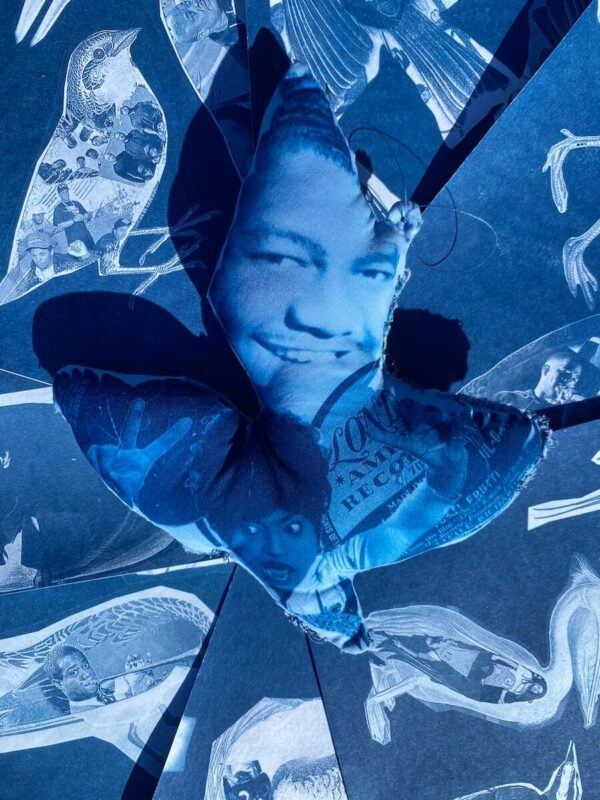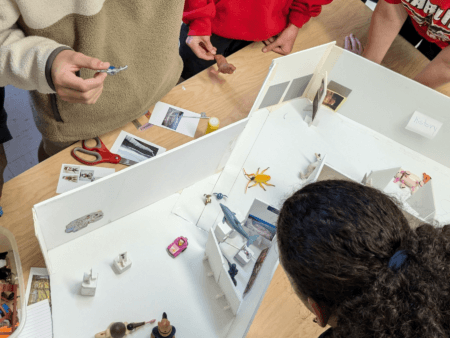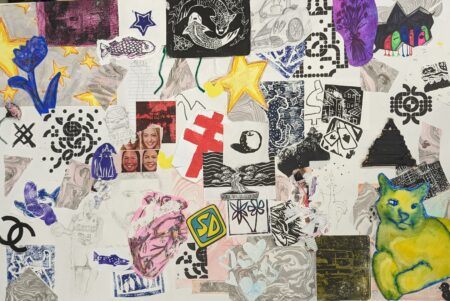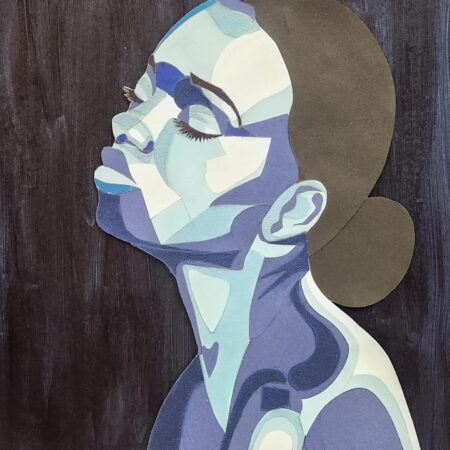Teaching with Contemporary Art
Illuminating projects for deeper understanding

Courtesy of Steven Speciale.
Illuminated projects are opportunities to develop art-making techniques and do deep dives into a topic. I think of it like illuminating a manuscript. The guiding ethos is that each step of the project will scaffold an element of depth or complexity to the step before to deepen the study as opposed to transforming it. The advantage to this illuminated project plan is that learners develop empathy with the subjects studied while gradually building skills. I can give them repeated exposure to a topic and keep it fresh by adding nuance to each iteration. Learners also get practice discussing difficult topics and have the time to contemplate their own relationships with the subject matter.
My example of illuminated design is Blues-Birds.
I taught my class about Black erasure as manifested in music history. I wish to first acknowledge that decolonizing the classroom is a holistic process inclusive of relationships and curriculum, not just a lesson plan. In this example, I aim to describe some of the specific issues raised by the specific subject matter.
I approach the material by being appropriately celebratory of historic Black contributions to music history and avoid teaching through the lens of trauma. After the historic foundations were laid, I began simultaneously instructing about techniques of cyanotype.
We learned the history of the cyanotype process, learners made simple cyanotype prints on prepared paper with found objects.
First, I taught about graphic and alternative scores, and students scored their memories of soundscapes on paper cyanotypes.
After this introduction, we made paper cyanotypes as gifts to engender empathy and instill a sense of pride in their work. A sound-artist friend was enduring a rare medical treatment; rather than have students make another cyanotype to turn in for a grade, I suggested that we listen to my friend’s work, then make individual cyanotype scores of what we heard and send them as gifts. My students were more intentional about how they listened to the work and were more deliberate in their object choice when exposing the cyanotype. I noticed much more care in how they treated the paper in the developing and drying process because they knew it was going to be a gift. Students had experienced the cyanotype print process three times now, each time adding a small layer of complexity.
I then introduced the work of Art21 artists like Kerry James Marshall and others who focus on identity. We learned that Marshall has focused on the famous bird paintings of John Audubon because Audubon was a slave-owner. Because of this, Marshall uses the Audubon birds as a shorthand for the elements of racism that are hidden and erased. We pay homage to this conceit by making digital collages with Audubon bird paintings that celebrate Black musicians in history. Students chose and researched their own musicians. By printing them on cyanotype and naming them “Blues-Birds” we primarily honor the musicians while acknowledging the inherent trauma and erasure issues via the Audubon bird. The blue of the cyanotype process also embeds the reference of the blues as a foundational musical form and is a nod to the idea of lament. Students had to make five prints.
Students took the digital files of all their created birds and made small prints of them on paper. We cut them out and hung a thousand of them in an installation. Another three hundred prints were pinned on the wall in the outline of an Audubon bird.
Blues-Birds Pinwall and Mobiles, video by Steven Speciale.
Finally, students researched a Black musician who suffered erasure, cultural appropriation, or a specific racist act. Students created an Audubon bird collage to celebrate their chosen musician, then reversed the same bird’s image and made a second collage around the specific issue of systemic racism affecting their musician. The birds were printed on cyanotype fabric then sewn together as a two-sided plushie. A soundscape about the specific issue suffered by the celebrated musician was composed and loaded onto a device that would play it when squeezed. Making the most pointed work into a squeeze toy symbolizes how systemic racism is taught to us innocuously from the earliest ages. The sheer number of birds, sixty-five plushies, is intended to both inspire and shock.
Blues-Birds Plushies, video by Steven Speciale.
Great care was taken to lay the appropriate cultural foundations prior to asking learners to consider their personal relationships with structural racism by establishing classroom culture, setting expectations for in class speech, and creating an intentional safe space. Particular attention was devoted to teaching history while avoiding the lens of trauma. Learners were given multiple opportunities to practice the cyanotype process before tackling the most sophisticated versions; each time there was a small increase in expectation so the project would not become stale.
I enjoy the flexibility of this process. A project can be stopped or extended at any point according to any kinds of constraints. The above examples happened to take months of an academic year, but it also could have ended at any point and still been successful. Depending on the learners, the creative responsibilities of illumination can be handed to them in varying degrees. I tended to view the project stages as scaffolds and increased the freedom as the projects proceeded.



